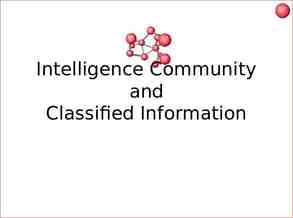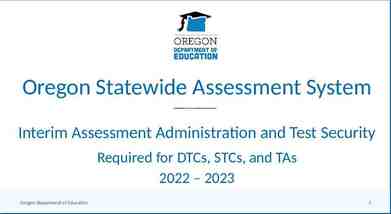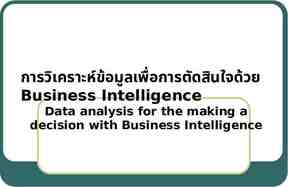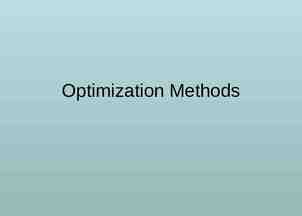AD643 – Conflict Management Source material: McGraw Hill
69 Slides968.50 KB

AD643 – Conflict Management Source material: McGraw Hill

Slide 2 Conflict Management McGraw-Hill Sources of Conflict Desirability of Conflict Types of Conflict Undesirability of Conflict Game Theory Toward Conflict Management 2009 The McGraw-Hill Companies, Inc. All rights

Slide 3 Sources of Conflict Conflict is “an --expressed struggle --between at least two interdependent parties --who perceive incompatible goals, scare resources, and --interference from others in achieving their goals” (Wilmot and Hocker, 1998) Conflicts exist whenever incompatible activities occur. McGraw-Hill 2009 The McGraw-Hill Companies, Inc. All rights

Slide 4 Sources of Conflict Conflicts may originate from a number of different sources, including: Differences in information, beliefs, values, interests, or desires. A scarcity of some resource. Rivalries in which one person or group competes with another. McGraw-Hill 2009 The McGraw-Hill Companies, Inc. All rights

Slide 5 Sources of Conflict 50% of project conflicts Personality Less common sources of conflict 8 McGraw-Hill Cost Procedure Technical Opinions Human Resources Priorities Schedules More common sources of conflict 2009 The McGraw-Hill Companies, Inc. All rights

Slide 6 Desirability of Conflict Conflict can be desirable. Conflict helps eliminate or reduce the likelihood of groupthink. A moderate level of conflict across tasks within a group resulted in increased group performance while conflict among personalities resulted in lower group performance (Peterson and Behfar, 2003) McGraw-Hill 2009 The McGraw-Hill Companies, Inc. All rights

Slide 7 Types of Conflict Conflict of ideas – Dooley and Fryxell (1999) found that conflict of ideas at the early stage of decision making (idea formulation) was desirable. – However, it can cause problems at a later stage when the ideas have to be implemented. Conflict of feelings are often called personality conflict McGraw-Hill 2009 The McGraw-Hill Companies, Inc. All rights

Slide 8 Types of Conflict Opposition and Support McGraw-Hill 2009 The McGraw-Hill Companies, Inc. All rights

Slide 9 Undesirability of Conflict Conflicts can be hard to control once they have begun. – The trend is toward escalation and polarization. – When conflict escalates to the point of being out of control, it almost always yields negative results. McGraw-Hill 2009 The McGraw-Hill Companies, Inc. All rights

Slide 10 Game Theory Game theory puts people into the mixedmotive situation. – Covey (1990) in The Seven Habits of Highly Successful People refers to the scarcity mentality versus the abundance mentality. The scarcity mentality leads us to resent the success of others. The abundance mentality allows us to think of situations in which everybody can win. McGraw-Hill 2009 The McGraw-Hill Companies, Inc. All rights

Slide 11 Toward Conflict Management Conflict management is defined as “the opportunity to improve situations and strengthen relationships” (BCS, 2004). –proactive conflict management –collaborative conflict management McGraw-Hill 2009 The McGraw-Hill Companies, Inc. All rights

Slide 12 Toward Conflict Management Blake and Mouton’s Conflict Grid McGraw-Hill Source: Reproduced by permission from Robert R. Blake and Jane Syngley Mouton. 2009 The McGraw-Hill Companies, Inc. All 1970. rights “The Fifth Achievement.” Journal of Applied Behavioral Science 6(4),

Slide 13 Toward Conflict Management Blake and Mouton (1970) proposed a grid that shows various conflict approaches. – The 1,1 style is the hands-off approach, also called avoidance. – The 1,9 position, also called accommodation, is excessively person-oriented. McGraw-Hill 2009 The McGraw-Hill Companies, Inc. All rights

Slide 14 Toward Conflict Management – The 5,5 position represents a willingness to compromise. – The 9,1 is the bullheaded approach, also called competing. – The optimum style for reducing conflict is the 9,9 approach, also called collaboration. McGraw-Hill 2009 The McGraw-Hill Companies, Inc. All rights

Slide 15 Toward Conflict Management Borisoff and Victor (1998) argue that the best strategy for conflict management (negotiation) depends on the desired outcome. McGraw-Hill 2009 The McGraw-Hill Companies, Inc. All rights

Slide 16 Toward Conflict Management Unilateral negotiation strategies include: The trusting collaboration strategy. The open subordination strategy. The firm competition strategy. The active avoidance strategy. McGraw-Hill 2009 The McGraw-Hill Companies, Inc. All rights

Slide 17 Toward Conflict Management Interactive negotiation strategies McGraw-Hill Trusting collaboration Principled negotiation Firm competition Soft competition Open subordination Focused subordination Active avoidance Passive avoidance Responsive avoidance 2009 The McGraw-Hill Companies, Inc. All rights

Slide 18 Conflict Resolution Methods Confronting / Problem Solving Compromising Forcing Smoothing / Accommodating Withdrawing / Avoiding 8 McGraw-Hill 2009 The McGraw-Hill Companies, Inc. All rights

Slide 19 Confronting / Problem Solving Sometimes referred to as “collaborating” Generally viewed as the best method for conflict resolution 8 Looks to solve the conflict at the source so it will not be an issue for the project McGraw-Hill 2009 The McGraw-Hill Companies, Inc. All rights

Slide 20 Confronting / Problem-Solving when When conflicting parties can get at least what they want and maybe more To reduce cost To create a common power base To attack a common foe 8 When skills are complimentary McGraw-Hill 2009 The McGraw-Hill Companies, Inc. All rights

Slide 21 Confronting / Problem-Solving when When there is enough time When there is trust When you have confidence in the other’s ability When the ultimate objective is to learn 8 McGraw-Hill 2009 The McGraw-Hill Companies, Inc. All rights

Slide 22 Compromising To negotiate or bargain for a solution to give both parties some degree of satisfaction “Give and take” or “win-win” Neither party gets everything they want or need (“lose-lose”) 8 McGraw-Hill 2009 The McGraw-Hill Companies, Inc. All rights

Slide 23 Compromising when When both parties need to be “winners” When you can’t win When others are as strong as you are When you haven’t time to win To maintain the relationship 8 McGraw-Hill 2009 The McGraw-Hill Companies, Inc. All rights

Slide 24 Compromising when When you are not sure you are right When you get nothing if you don’t When stakes are moderate To avoid giving the impression of “fightin g” 8 McGraw-Hill 2009 The McGraw-Hill Companies, Inc. All rights

Slide 25 Forcing When one party imposes the solution on the other party “win-lose” situation, wins at the expense of the loser 9 Does not always address the underlying source of conflict and often reduces team morale McGraw-Hill 2009 The McGraw-Hill Companies, Inc. All rights

Slide 26 Forcing when When you are right When a do-or-die situation exists When stakes are high When important principles are at stake When you are stronger 9 McGraw-Hill 2009 The McGraw-Hill Companies, Inc. All rights

Slide 27 Forcing when To gain status or power In short term (one time) deals When the relationship is unimportant When a quick decision must be made 9 McGraw-Hill 2009 The McGraw-Hill Companies, Inc. All rights

Slide 28 Smoothing / Accommodating Emphasize areas of agreement Tends to downplay conflict instead of solving conflict May make sacrifices to satisfy the needs of the other party 9 McGraw-Hill 2009 The McGraw-Hill Companies, Inc. All rights

Slide 29 Smoothing / Accommodating when To reach an overarching or higher goal To create obligation for a trade-off at a later date When the stakes are low When liability is limited 9 McGraw-Hill 2009 The McGraw-Hill Companies, Inc. All rights

Slide 30 Smoothing / Accommodating when To maintain harmony When any solution will be adequate To create goodwill When you will lose anyway To gain time 9 McGraw-Hill 2009 The McGraw-Hill Companies, Inc. All rights

Slide 31 Withdrawing / Avoiding Temporary solution at best Conflict and source of conflict will continue through project life Some view as cowardice and unwillingness to address the conflict situation 9 McGraw-Hill 2009 The McGraw-Hill Companies, Inc. All rights

Slide 32 Withdrawing / Avoiding when When you can’t win When stakes are low When stakes are high, but you are not ready To gain time 9 McGraw-Hill 2009 The McGraw-Hill Companies, Inc. All rights

Slide 33 Withdrawing / Avoiding when To unnerve your opponent To preserve neutrality or reputation When you think the problem will “go awa y” When you win by delay 9 McGraw-Hill 2009 The McGraw-Hill Companies, Inc. All rights

Slide 34 Conflict – Door stuck shut Throw shoulder into door and break it open (Forcing) Ignore it, hope another will fix the door (Withdrawing/Avoiding) Determine what is causing the door to be stuck and correct the problem (Confronting / Problem solving) 9 McGraw-Hill 2009 The McGraw-Hill Companies, Inc. All rights

Slide 35 Toward Conflict Management Fisher, Ury, and Patton (1991) outline four principles that compose principled negotiation. – – – – McGraw-Hill Separate the people from the problem. Focus on interests, not positions. Invent options for mutual gain. Seek objective criteria. 2009 The McGraw-Hill Companies, Inc. All rights

Slide 36 Toward Conflict Management The Continuum of Decision-Making Behavior has been described as including four styles of decision making: Tells Sells Consults Joins McGraw-Hill 2009 The McGraw-Hill Companies, Inc. All rights

Slide 37 Toward Conflict Management Diane Yale (1988) outlines three metaphorical approaches to conflict: The competitive, adversarial metaphor – Often results in a winner and loser in the resolution process. The problem-solving metaphor – If [conflict] is focused on problem-solving, everything that comes at you is seen as a problem or a solution. McGraw-Hill The creative orientation metaphor Brings an innovative quality to group conflict resolution. 2009 The McGraw-Hill Companies, Inc. All rights

Slide 38 Toward Conflict Management— Practical Tips Walker and Harris (1995) offer the following practical tips for implementing the 9,9 style. Encouraging behavior occurs when a team member: 1. Avoids feelings or perceptions that imply the other person is wrong or needs to change. 2. Communicates a desire to work together to explore a problem or seek a solution. 3. Exhibits behavior that is spontaneous and destructionfree. McGraw-Hill 2009 The McGraw-Hill Companies, Inc. All rights

Slide 39 Toward Conflict Management— Practical Tips 4. Identifies with another team member’s problems, shares feelings, and accepts the team member’s reaction. 5. Treats other team members with respect and trust. 6. Investigates issues rather than taking sides on them. – McGraw-Hill The same principles can be applied to negotiating with others outside your team, or with a supplier or customer. 2009 The McGraw-Hill Companies, Inc. All rights

Slide 40 Toward Conflict Management A Continuum of Decision-Making Behavior McGraw-Hill 2009 The McGraw-Hill Companies, Inc. All rights

Slide 41 Review of the Systems Approach Individuals should understand their own personal triggers to better deal with conflict situations in the workplace (Robin, 2004) Group members should think about other group members early on to identify privately those individuals and behaviors that may push their buttons. McGraw-Hill 2009 The McGraw-Hill Companies, Inc. All rights

Slide 42 Review of the Systems Approach Conflict may have some desirable consequences. Out of control conflict may be destructive. Conflict-producing behaviors are more likely from those high in aggression, dominance, and the need for autonomy. An important factor related to conflict is the style of leadership and the resulting group norms regarding conflict. McGraw-Hill 2009 The McGraw-Hill Companies, Inc. All rights

Slide 43 McGraw-Hill 2009 The McGraw-Hill Companies, Inc. All rights

Slide 44 Lead Lead - The process of influencing others to achieve individual, group or organizational goals. – – Jim Cormier McGraw-Hill Leading involves getting others to perform the necessary tasks by motivating them to achieve the organization’s goals. Motivation is a psychological state that exists whenever internal and/or external forces stimulate, direct, or maintain behaviors. AD643 – Boston University 2009 The McGraw-Hill Companies, Inc. All rights

Slide 45 Leadership Leadership is influence held over a group or individual. This influence is used to move this group or individual toward the attainment of a goal or objective. Jim Cormier McGraw-Hill AD643 – Boston University 2009 The McGraw-Hill Companies, Inc. All rights

Slide 46 Project Leadership Project Leadership is influence held over a group or individual Project Stakeholders. This influence is used to move this group or individual toward the attainment of the goals and/or objectives of the project. Jim Cormier McGraw-Hill AD643 – Boston University 2009 The McGraw-Hill Companies, Inc. All rights

Slide 47 Who Makes the Best Leader We must identify leadership potential: – It is a required element in a manager – Succession Planning How do we identify Leaders – This question was one of the first put to the emerging field of Management Science – In order for us to see what the fruit of MS’s labor it will be necessary for you to participate in a little exercise we have for you. Secure your area Have a pencil and paper handy Jim Cormier McGraw-Hill AD643 – Boston University 2009 The McGraw-Hill Companies, Inc. All rights

Slide 48 Trait Model Identified personal characteristics that, when present in a leader will cause effective leadership. Intelligence Dominance Self-Confidence High Energy Level Task Relevant Knowledge * This list is in order of number of times that surveys reported this trait as required. Research shows that certain personal “traits” do appear to be connected to effective leadership. Many “traits” are the result of skills and knowledge and effective leaders do not necessarily possess all of these traits. Jim Cormier McGraw-Hill AD643 – Boston University 2009 The McGraw-Hill Companies, Inc. All rights

Slide 49 Leadership Models Behavioral Model – Identifies the two basic types of behavior that many leaders engaged in to influence their subordinates: Consideration: employee-centered leadership behavior indicating that a manager trusts, respects, and cares about subordinates Initiating structure: job-oriented leadership behavior that managers engage in to ensure that work gets done, subordinates perform their jobs acceptably, and the organization is efficient and effective. Both behaviors are independent; managers can be high or low on both behaviors. Jim Cormier McGraw-Hill AD643 – Boston University 2009 The McGraw-Hill Companies, Inc. All rights

Slide 50 Leadership Behaviors (cont.) Robert Blake and Jane Mouton developed the managerial grid. The managerial grid is more complex and identifies five leadership styles that combine different degrees of concern for production and concern for people. Jim Cormier McGraw-Hill AD643 – Boston University 2009 The McGraw-Hill Companies, Inc. All rights

Slide 51 The Managerial Grid Model High 10 Country 1, 9 club style 9 9, 9 Concern for people 8 7 6 5 5, 5 4 2 Low 0 1, 1 0 Low Jim Cormier Middleof-theroad style 3 1 McGraw-Hill Team style 1 Impoverished style 2 3 4 9, 1 5 6 7 8 Concern for production AD643 – Boston University 9 Produce or perish style 10 High 2009 The McGraw-Hill Companies, Inc. All rights

Slide 52 Contingency Models of Leadership Fiedler’s Model – Effective leadership is contingent on both the characteristics of the leader and of the situation. – Leader style is the enduring, characteristic approach to leadership that a manager uses and does not readily change. Relationship-oriented style: leaders concerned with developing good relations with their subordinates and to be liked by them. Task-oriented style: leaders whose primary concern is to ensure that subordinates perform at a high level so the job gets done. Jim Cormier McGraw-Hill AD643 – Boston University 2009 The McGraw-Hill Companies, Inc. All rights

Slide 53 Fiedler’s Model Situation Characteristics – How favorable a situation is for leading to occur. – Leader-member relations—determines how much workers like and trust their leader. – Task structure—the extent to which workers tasks are clear-cut; clear issues make a situation favorable for leadership. – Position Power—the amount of legitimate, reward, and coercive power leaders have due to their position. When positional power is strong, leadership opportunity becomes more favorable. Jim Cormier McGraw-Hill AD643 – Boston University 2009 The McGraw-Hill Companies, Inc. All rights

Slide 54 Fiedler’s Contingency Theory of Leadership Jim Cormier McGraw-Hill Figure 13.2 2009 The McGraw-Hill Companies, Inc. All rights AD643 – Boston University

Slide 55 Fiedler’s Model in Application Combines considerations of leader-member relations, task structure, and position power to identify leadership situations. – Identifies situations where given types of managers might perform best. – Leader style is a characteristic managers cannot change; managers will be most effective when: they are placed in situations that suit their leader style. the situation can be changed to fit the manager’s leader style. Jim Cormier McGraw-Hill AD643 – Boston University 2009 The McGraw-Hill Companies, Inc. All rights

Slide 56 Gender and Leadership The number of women managers is rising but is still relatively low in the top levels of management. – Stereotypes suggest women are supportive and concerned with interpersonal relations. Similarly, men are seen as task-focused. Research indicates that actually there is no genderbased difference in leadership effectiveness. Women are seen to be more participative than men because they adopt the participative approach to overcome subordinate resistance to them as managers and they have better interpersonal skills. Jim Cormier McGraw-Hill AD643 – Boston University 2009 The McGraw-Hill Companies, Inc. All rights

Slide 57 Understanding Motivation Motivation is a psychological state that exists whenever internal and/or external forces stimulate, direct, or maintain behaviors. Jim Cormier McGraw-Hill AD643 – Boston University 2009 The McGraw-Hill Companies, Inc. All rights

Slide 58 Individual Differences Approach A need is a strong feeling of deficiency in some aspect of a person’s life that creates an uncomfortable tension. Hierarchy of needs describes the order in which people seek to satisfy their desires. Jim Cormier McGraw-Hill AD643 – Boston University 2009 The McGraw-Hill Companies, Inc. All rights

Slide 59 on ssi ion -Pr Sat isfa ct e egr n-R t io Jim Cormier McGraw-Hill stra Fru ogr e ss ion Moving up and Down the Needs Hierarchy AD643 – Boston University 2009 The McGraw-Hill Companies, Inc. All rights

Slide 60 Leadership Behaviors Douglas McGregor coined the labels Theory X and Theory Y to contrast the beliefs of leaders as to what motivates their subordinates. Jim Cormier McGraw-Hill AD643 – Boston University 2009 The McGraw-Hill Companies, Inc. All rights

Slide 61 Assumptions Associated with Theory X and Theory Y Theory Y Theory X Employees dislike work and will try to avoid it if possible. Employees like to work and achieve something. Employees want and need direction. Employees do not want to participate in setting/achieving goals Employees want self-direction and work toward the company’s objectives. Jim Cormier McGraw-Hill Employees are eager to take on responsibilities at work. AD643 – Boston University 2009 The McGraw-Hill Companies, Inc. All rights

Slide 62 Organizational Approach Herzberg’s hygiene theory states that two separate and distinct aspects or the work context are responsible for motivation and satisfying employees. Jim Cormier McGraw-Hill AD643 – Boston University 2009 The McGraw-Hill Companies, Inc. All rights

Slide 63 Two–Factor Theory Jim Cormier McGraw-Hill AD643 – Boston University 2009 The McGraw-Hill Companies, Inc. All rights

Slide 64 Goal Setting Theory Goal-setting theory states that managers can direct the performance of their employees by assigning specific, difficult goals that employees accept and are will to commit to. – Management by objectives (MBO) is a participative goal-setting technique used in many U.S. organizations. Jim Cormier McGraw-Hill AD643 – Boston University 2009 The McGraw-Hill Companies, Inc. All rights

Slide 65 How Goal Setting Works Goals -Specific -Difficult -Accepted Effects on Employee -Directs attention -Energizes -Encourages persistency -New strategies developed Performance Feedback Jim Cormier McGraw-Hill AD643 – Boston University 2009 The McGraw-Hill Companies, Inc. All rights

Process of Reinforcement and Behavior ChangeSlide 66 Stimulus Response of Employee (Behavior X) Consequences for Employee Likelihood of Behavior X in a Similar Future Situation Employee Experiences a Reward (Positive Reinforcement) or A Situation Experienced By Employee Employee Reacts By Exhibiting Behavior X Employee Avoids a Negative Consequence (Negative Reinforcement) or Employee Experiences a Negative Consequence (Punishment) or Employee Experiences No Consequences (Extinction) Jim Cormier McGraw-Hill AD643 – Boston University 2009 The McGraw-Hill Companies, Inc. All rights

Slide 67 Organizational Approach (cont.) Equity theory states that employees judge whether they’ve been treated fairly by comparing the ratio of their outcomes and inputs to the ratios of others doing similar work. Reactions to perceived inequity – – – Increase their outputs Decrease their outputs Change their compensation through legal or other actions – Modify their comparison by choosing another person for comparison – Distort reality by rationalizing that the inequities are justified – Leave the situation Jim Cormier McGraw-Hill AD643 – Boston University 2009 The McGraw-Hill Companies, Inc. All rights

Slide 68 Expectancy Theory Expectancy theory states that people tend to choose behaviors that they believe will help them achieve their personal goals (e.g., a promotion or job security) and avoid behaviors that they believe will lead to undesirable personal consequences (e.g., a demotion or criticism). Jim Cormier McGraw-Hill AD643 – Boston University 2009 The McGraw-Hill Companies, Inc. All rights

Slide 69 Expectancy Theory Expectancy Question: If I make an effort, will I be able to perform the behavior? Effort ? Instrumentality Question: If I perform the behavior, what will be the consequences? Performance Obtain desired outcomes (e.g., rewards, recognition, pride) ? Receive undesirable outcomes (e.g., punishment, ridicule shame) Valence Question: How much do I value the consequences associated with the behavior? Jim Cormier McGraw-Hill AD643 – Boston University ? 2009 The McGraw-Hill Companies, Inc. All rights






